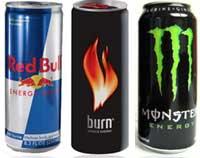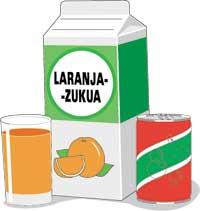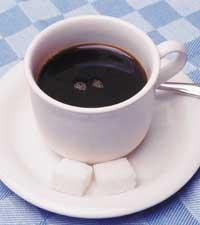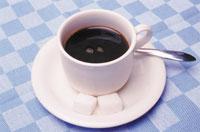Dangerous energy inside the container
2011/06/11 Galarraga Aiestaran, Ana - Elhuyar Zientzia
According to surveys conducted on consumers, the main consumers are men between 16 and 30 years old who consume these drinks mainly for three reasons: obtaining energy (71%), improving brain activity (60%) and 57% being awake.

They are designed for this purpose. On the one hand, they contain substances that block neurotransmitters that transmit the feeling of fatigue in the organism, especially caffeine. And not a few: although the caffeine concentration varies a lot, some have four times more caffeine than a single coffee or a cola soda. On the other hand, with the exception of those sold with the name light or diet, they have a high content in simple sugars and carbohydrates, so they provide the body with an energy that can be used immediately.
In addition to caffeine and sugar, they contain "exotic" ingredients such as guarana, taurine, ginsenga, mate, creatine, carnitine... Some of them are caffeine enhancers or contain caffeine and, for many, are powerful placebos. That is, they increase the intrinsic effect of the drink by the placebo effect.
Placebo placebos, are not simple soft drinks. However, there are consumers who consider them equal, without taking into account their consequences. And the consequences can be very serious. One of the most prominent cases occurred 10 years ago. Ross Cooney, an 18-year-old basketball player, drank three Red Bull after a match. Then he died.
The event had consequences: In France it was decided to ban the sale of Red Bull, in Denmark a deadline was banned and in Britain an investigation was opened. However, three years later, the European Court of Justice rejected the ban. Therefore, energy drinks are legal and lack specific regulations, both in Europe and outside of Europe.
Explanatory studies
However, the suspicions of being harmful to health have not been reduced, and proof of this is that they continue to investigate the possible consequences of these drinks. Just recently two studies have been published in specialized journals (Alcoholism: Clinical Experimental Research and American Academy of Pediatrics ).
The first study with university students has shown that the mixture of energy drinks and alcohol affects the ability to prevent risks. Consequently, those who drink these combinations are more likely to be brave than those who drink alcohol or empty energy drinks.
In the other study, the influence they have on children and young people has been analyzed and the conclusion has been reached that they are not suitable for them, especially because they have caffeine. In fact, in minors the nervous system continues to evolve, so the influence of caffeine is much greater in children than in adults, and also more variable in children. Thus, in many cases it produces alterations of sleep, problems of attention to the study, anxiety, nervousness and irritability, alterations of behavior and, in some cases, arrhythmia. Taurine and other components also increase the risk of heart problems.
For all this, health managers have recommended that in no case should such drinks be given to children and young people, and that adults take them in moderation and do not mix with alcohol. Once again against what is fashionable.
Published in Annex GAUR8.

Gai honi buruzko eduki gehiago
Elhuyarrek garatutako teknologia





